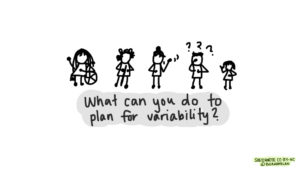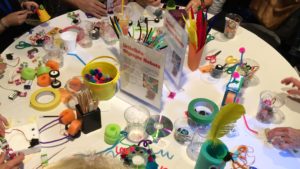August 22, 2016 - Comments Off on Learning About Assistive Technology
Learning About Assistive Technology
I’ve spent most of my adult life as a disability rights advocate. I have worked in spaces where disability was a prominent part of the conversation and in other spaces where it wasn’t even considered until I said something. I’ve never taken a formal class in special education, disability rights, or assistive technology...until now.
I’m excited to embark on a new journey in the field of assistive technology (AT) while continuing my work as a Digital Learning Specialist in the Boston Public Schools. Over the years, I have worked with people with disabilities who use AT and I even use it myself. In my current professional role, I support teachers with technology integration through a combination of Universal Design for Learning (UDL) principles and design thinking. I’m part of a team that provides blended professional learning through webinars, videos, in person trainings, and web resources. AT plays a vital role in my professional participation, and I’ve gotten the support that I need by being consistent and vocal about my needs. I am also intentional about the big picture, which is what drove me to want to pursue graduate studies in AT at the University of Illinois at Chicago.
In my program, I want to enhance my understanding of the ways that technology can be used for teaching and learning for all learners. Too often, those in the margins get ignored or are not given opportunities to participate fully, meaningfully, and with their chosen voice - in activities, academic conversations, employment, and social spaces. I profoundly understand what this means, and this is what drives me to learn more and to innovate.
This drive was solidified a few weeks ago when I attended Camp CreATe organized by Therese Willkomm and Stacy Driscoll of ATinNH, New Hampshire’s State Program on Assistive Technology. The organization focuses on training, education, and outreach on assistive technology and provides assistive technology services. I spent two days learning about both low and high tech tools for assistive technology and had the opportunity to fabricate low tech solutions with Therese's guidance. I later found out that one of the Boston Public Schools’ occupational therapists attended the program. We spoke about the highlights of the program for us and are excited to continue the conversation this year on making the connections between AT and IT more visible. I expect that there will be shared resources, videos, and webinars that will emerge from this.
In addition to applying what I learned at Camp CreATe, I will be taking online classes at the University of Illinois at Chicago (UIC). I’m excited to take the classes, share and apply what I have learned, and gain a new perspective as a student of online learning. With the latter, I will admit that it has been a challenge to be an online learner because so many online classes are inaccessible to deaf and hard of hearing learners. I am fortunate to have support from UIC’s Disability Resource Center to help ensure that my online journey will be accessible with captioned videos and webinars. I expect that in addition to sharing what I have learned about AT that I will also share what to do and not do in online learning - because learning does go beyond K-12 education.
Here’s to lifelong learning!






